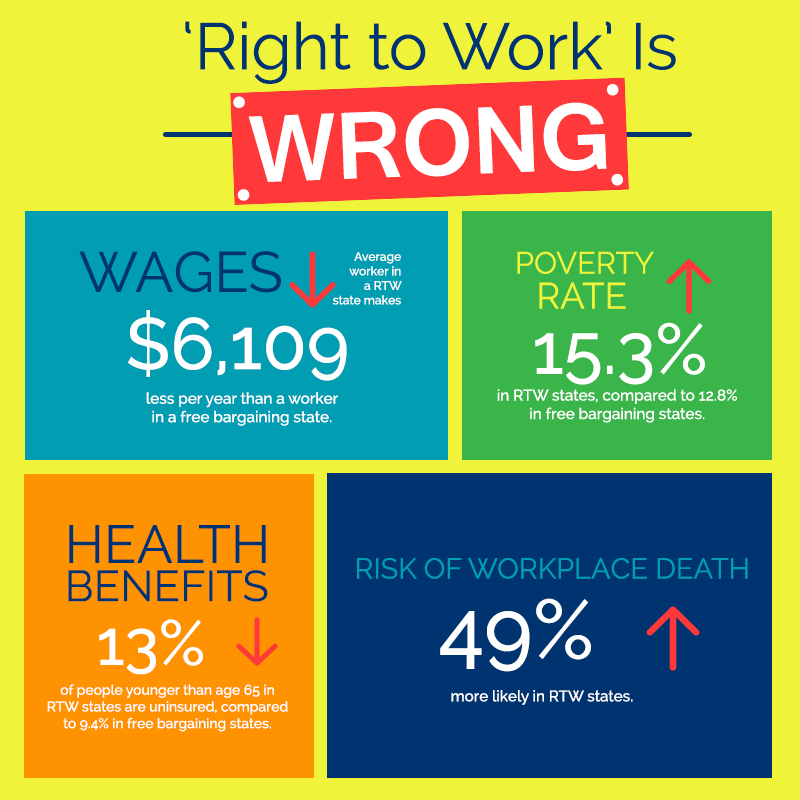So-Called “Right to Work”
So-Called “Right to Work” Laws Harm All Workers
The “Right to Work” may sound like a positive policy, but state “Right to Work” laws actually harm both union and non-union workers.
“Right to Work” laws allow a person to work under a union contract and reap the benefits of union representation without paying their fair share. These laws reduce the collective bargaining power that a union has, and the eventual result will be lower wages and benefits for all workers.
“Right to Work” laws currently only affect public sector unions, but their implications affect the entire labor movement.
High union wages force non-union contractors to provide similar wages to compete with their union counterparts. If so-called “Right to Work” laws drive down union wages, non-union wages will fall as well. This will damage the livelihood of all middle-class workers.

Federal “Right to Work” Would Erode the Rights That Unions Have Fought For
There is currently no federal “Right to Work” law, but various groups are working to establish them. This issue has been argued in the U.S. Supreme Court in cases like Abood v. Detroit Board of Education. In this case, it was ruled that public sector unions, like teachers’ unions, are permitted to charge fees to pay for the representation of non-union teachers.
Recently, the now conservative majority Supreme Court overturned Abood v. Detroit Board of Education. The court ruled in Janus v. AFSCME that public sector employees working in an organized workforce cannot be required to pay any fees to reap the benefits of collective bargaining.
A federal “Right to Work” law would decrease collective bargaining power for every union and devastate the rights and benefits that unions have fought for for generations.
The MSPTA advocates against the passing of federal and state “Right to Work” laws.
“Right to Work” Laws in the Mountain States
So far, 27 states have enacted “Right to Work” laws. Seven states in our mountain states jurisdiction are “Right to Work” states, while four are not.
“Right to Work” States
- Arizona, since 1946
- Idaho, since 1985
- Nebraska, since 1946
- Nevada, since 1951
- Utah, since 1955
- South Dakota, since 1946
- Wyoming, since 1963
Non-“Right to Work” States
- Colorado
- Oregon
- Montana
- California

